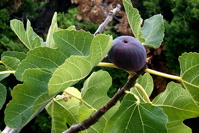I have had a 3x5 card on my desk for over 2 weeks, with everything on it crossed off except 'START SEEDS'. Argh! Last night, finally, I got my game on and started spring seedlings. I admit that one of the complications was that I had to rearrange the porch to actually create useable space for a folding table near the outlet, so that I could use my new seed-starting mats. But still.

I'm still not sure how many tomato plants I can realistically put into my rearranged garden beds. I also, of course, want room for lots of peppers and an eggplant or two. Things like beans can vine up into the sun, or in the case of yellow bush beans, fit into a small sunny row at the edge of a bed. It's the towering redwood kudzu of indeterminate tomato plants that requires the complicated space planning. There will *not* be a yellow pear tomato this year. Last year, despite frequent prunebacks, it turned into a tomato TREE, going not only up onto the neighbors' carport roof but trying to grow into their storage shed through the vents. Yargh. We're going to put something a bit tamer in that spot this year, yes. But let's cut to the chase: What did I start?
- Early Girl, Better Boy, Stupice, Moskvich, Gregori's Altai
- Amish Paste, Yellow Plum, Black Plum, Principe Borghese
- Noir de Crimee, Black Cherry, Santa Clara Canner, Aunt Ruby's German Green
- Hawaiian Pineapple, Pineapple, Tigerella, Green Zebra
- Ping Tung Long (eggplant), Lil Spooky (eggplant), Toma Verde (tomatillo)
- Super Shepherd Frying, Hungarian Paprika, Hungarian Yellow Wax, Jimmy Nardello (all peppers)
I haven't even planted one-of-each of all the varieties of tomatoes I acquired this year. Even in the 1 - 2 dozen seeds per packet homegrown / small-supplier form, I suspect I will just plain not have to buy tomatoes ever again. Of course, I certainly *will*, because there's bound to be something I really want to try. But I digress. This set of seedlings has onesy-twosey of a couple of things, but is mostly in groups of 3 or 4. I figure one for me, one to make sure there's one for me, and I never seem to have a problem finding people who want good tomato seedlings. In fact, instead of proferring them to all and sundry, I might just give a few to my bestest buddies and trot the rest of them down to the local flea market this year. I have things you won't find at the local hardware store, and if I can get a buck or two each for some seedlings in recycled 4-inch pots, I won't feel quite so bad about how much I spent on tomato seeds this year.

Just as the best way to feel bad on a dive vacation is to divide the cost of the trip by the number of useable photos you got (oooh, BAD move!), I am going to not think about all I've spent on seeds, perlite, garden tools, raised beds, the greenhouse, etc, because otherwise I will feel absolutely dreadful. Besides, I'm psychologically incapable of spending that same amount on a CSA subscription for a box full of mostly kale, which I don't really eat. I'd just blow it on retirement planning or repainting the house or something. And that's no fun, right? Right! It's not just a hobby, it's a sacred calling. So there.
Besides, I'll be starting a ton of Ace, Better Boy, and other rugged, garden-novice-compatible tomato seedlings for the new Sunnyvale Community Garden later on, so I'd better start my stuff while I can. And my 3x5 card? It's still there, with "START SEEDS" crossed off, but next to it written "START ROOTS". I'm really, really behind on getting carrots, beets, radishes, and chard into the new beds...












